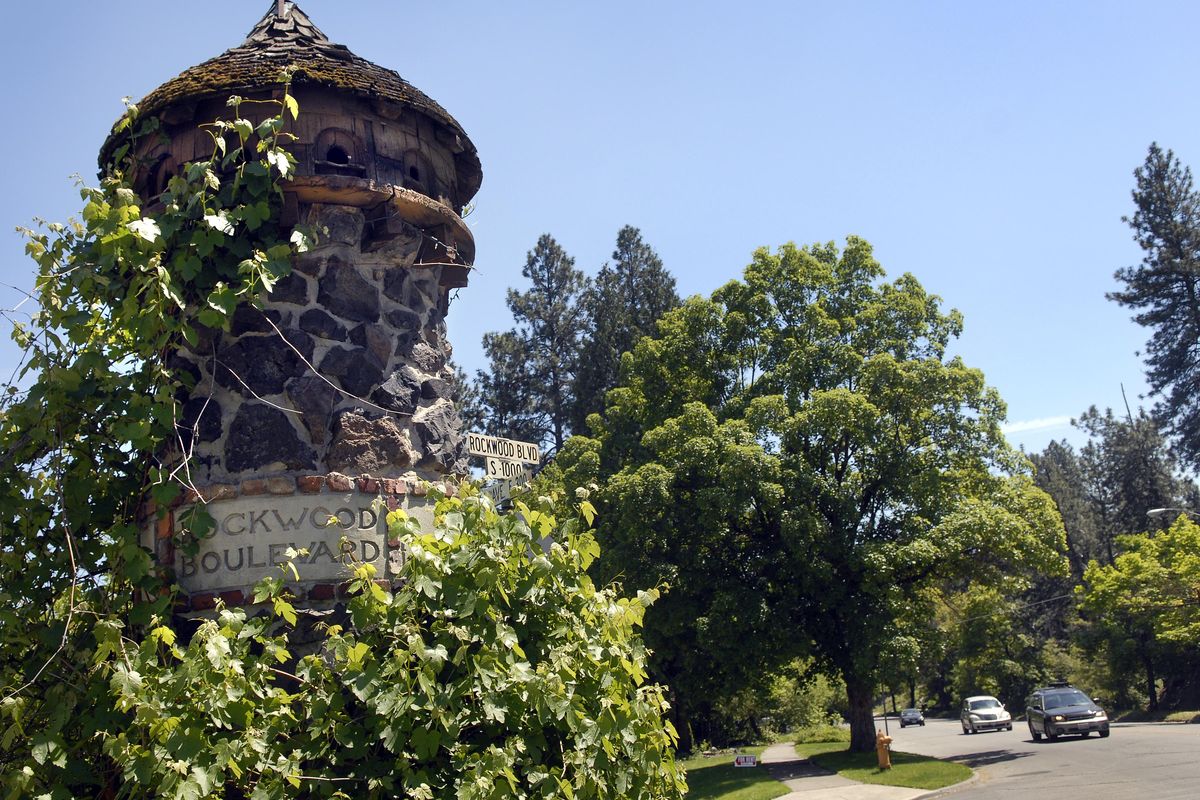29th Avenue anchors duo of historic neighborhoods

One of Spokane’s oldest and most storied neighborhoods starts on the lower South Hill, not far from where two of its oldest boulevards, Grand and Rockwood, nearly intersect at the edge of Providence Sacred Heart Medical Center.
While Rockwood is the street that gives the neighborhood its name, Grand has what is arguably its most impressive structure, The Cathedral of St. John the Evangelist. With its classic Gothic architectural styling, it would look at home in a “Masterpiece Theatre” miniseries on PBS.
Rockwood Boulevard became the address for Spokane’s nouveau riche who were making fortunes in mining, retail and professional services in a city that saw its population swell from 37,000 in 1900 to 104,000 by 1920. The neighborhood surrounding the boulevard was designed by the Olmsted Brothers Landscape Architectural Firm, with curving tree-lined streets designed to take advantage of natural features like the basalt bluffs that overlook the city.
Legend has it that Kirtland Cutter designed the rounded basalt pillars topped with birdhouses at Rockwood and 11th Avenue, and Hatch Road and Highland Boulevard. The pillars aren’t mentioned in books of the famous architect’s works, but they are similar to features he put in other projects.
The Olmsteds and their company also designed the the city’s park system. Rockwood neighborhood itself has only three small city parks – triangular patches of green along Garfield Road – although it has significant stretches of green space, particularly around the Hutton Elementary School, a stucco and tile roof structure built in the 1920s and renovated in 2014-15.
But the neighborhood is sandwiched between two of the city’s largest neighborhood parks: Manito Park, just across Grand, and Lincoln Park, across Southeast Boulevard where Rockwood intersects. Lincoln Park has upper and lower sections and lends its name to Lincoln Heights, where home construction began in the mid-1920s and continued for decades as Spokane grew east and south, so the homes are an eclectic mix of styles ranging from Craftsman to rancher to midcentury multilevels.
Rockwood has little commercial development except along Grand and its southern boundary of 29th Avenue, and some of that is relatively recent. When originally built, it was served by small “mom and pop” grocery stores. The last one, Rockwood Market at 18th and Latawah, hung on until 1998 and has been converted into Rockwood Bakery.
Lincoln Heights, however, is bisected by 29th, which has stores, restaurants and offices along much of its route through the neighborhood, including the shopping area at Regal Street.
The Lincoln Heights neighborhood starts below Lincoln Park along Altamont and 11th Avenue, stretches to the city’s eastern boundary on Havana and covers perhaps twice as much area as Rockwood. A second park, Thornton-Murphy, borders the Lincoln Heights Shopping Center, and its public elementary schools include Franklin, Adams and, of course, Lincoln Heights.
Ferris High School is near Adams, just across the southern boundary of 37th Avenue, and Chase Middle School borders its southeastern tip. All Saints Elementary is at 18th and Freya, and All Saints Middle School is at 33rd and Perry.